About NAM Summit:
- The 19th NAM Summit was held under Uganda's leadership in Kampala. Uganda has taken over as chair from Azerbaijan, to run until 2027.
- Theme: ‘Deepening Cooperation for Shared Global Affluence.’
- Key discussions at the summit:
- Israel-Hamas war
- India’s “Vishwaa Mitra” initiative
- A call for multipolar world
About Non-Aligned Movement:
- The Non-Aligned Movement (NAM) is an alliance of developing nations that refuses to identify with any major superpower.
- It was established in 1961 at the height of the Cold War. Whereas it started with the Bandung Conference held in Indonesia in 1955.
- Current members:
- 120 countries: 53 from Africa, 39 from Asia, 26 from Latin America and the Caribbean and two from Europe.
- It also includes the non-UN member state of Palestine, 17 other observer countries, and 10 observer organizations.
- India is one of the founding members.
- After the United Nations, NAM is the second-largest grouping of nations.
- NAM does not have a permanent secretariat or a formal founding charter, act, or treaty
- The summit usually takes place every three years.
2. Gangetic dolphin
About Gangetic dolphin:
- Common Name: Susu
- Scientific Name: Platanista gangetica gangetica.
- Population: Less than 1800 (1200 to 1800).
- Habitat: Ganges river dolphins once lived in the Ganges-Brahmaputra-Meghna and Karnaphuli-Sangu river systems of Nepal, India, and Bangladesh.
- Some characteristics:
- The Ganges river dolphin can only live in freshwater.
- It is essentially blind and they hunt by emitting ultrasonic sounds.
- It has a sturdy, yet flexible, body with large flippers and a low triangular dorsal fin.
- Calves are chocolate brown at birth and then have grey-brown smooth, hairless skin as adults.
- Females are larger than males and give birth once every two to three years to only one calf.
- Conservation status:
- IUCN: Endangered
- Wildlife (Protection) Act: Schedule-I
- CITES: Appendix I
Government's conservation efforts:
- In 2009, Gangetic dolphins were declared the national aquatic animal of India.
- The Prime Minister announced ‘Project Gangetic Dolphin’ on August 15, 2023 for the conservation of the Gangetic dolphins.
3. Atal Bhujal Yojna
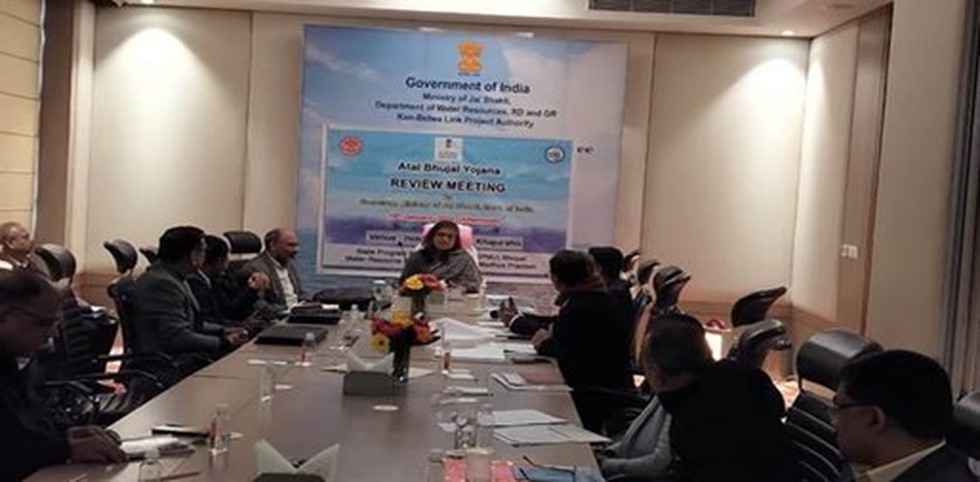
About Atal Bhujal Yojna:
- Atal Bhujal Yojana is a central sector scheme which was launched in 2019.
- Duration: Period of 5 years (2020-21 to 2024-25), Increased by 2 years in May, 2023.
- Objective: The major objective of the Scheme is to improve the management of groundwater resources in select water stressed areas in identified states.
- The scheme is being taken up in 8220 water stressed Gram Panchayats of seven states: Haryana, Gujarat, Karnataka, Madhya Pradesh, Maharashtra, Rajasthan and Uttar Pradesh.
- Scheme components : It has two major components:
- Institutional Strengthening and Capacity Building Component for strengthening institutional arrangements for sustainable groundwater management in the States including improving monitoring networks, capacity building, strengthening of Water User Associations, etc.
- Incentive Component for incentivising the States for achievements in improved groundwater management practices namely, data dissemination, preparation of water security plans, implementation of management interventions through convergence of ongoing schemes, adopting demand side management practices etc.
- The scheme is being funded by the Government of India and the World Bank on a 50:50 basis.
- Total cost of scheme is Rs. 6,000 crore, Out of this, Rs. 3,000 is loan from the
World Bank and Rs. 3,000 crore is matching contribution from the Government of India.
- Implemented Ministry: Ministry of Jal Shakti.
- The key results areas are:
- Strengthened institutional framework and effective ground water data monitoring and disclosure.
- Improved planning and implementation of groundwater management interventions.
4. Sultanpur National Park (Haryana)
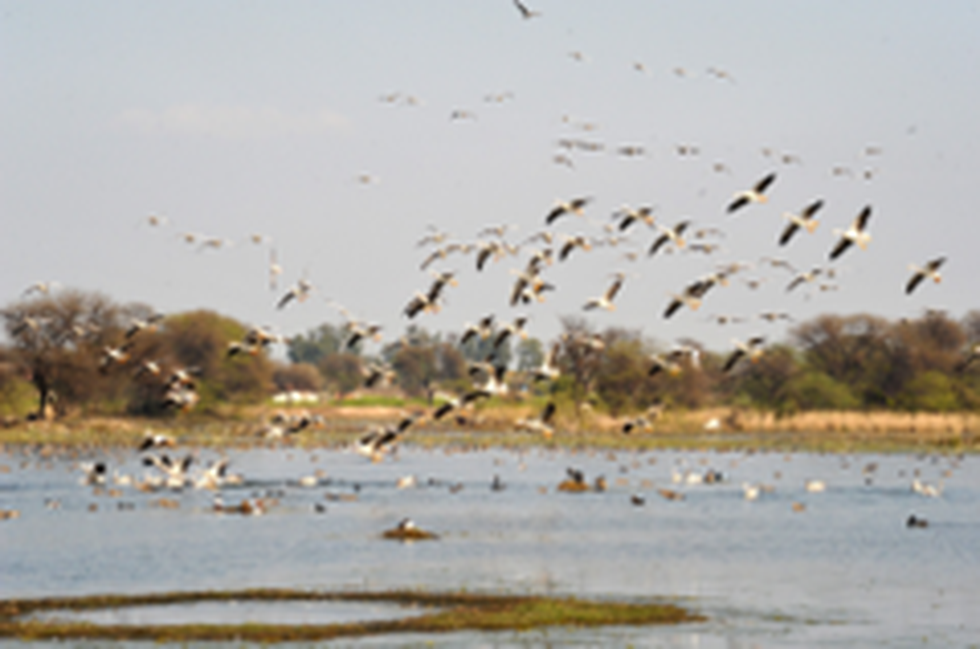
About Sultanpur National Park:
- Formerly known as Sultanpur Bird Sanctuary, it spans 1.42 sq km consisting primarily of marshy lakes and floodplains.
- Location: The Sultanpur Bird Sanctuary is located in the Gurgaon district of Haryana, 46 km from Delhi.
- Ramsar Site: It was recognised as a Ramsar site, a wetland of international importance in 2021.
- Biodiversity: The vegetation is characterized by tropical and dry deciduous types such as grasses, dhok, khair, tendu, jamun, neem, berberis, and species of Acacia.
- Over 320 bird species have been recorded at Sultanpur, making it a vital wintering ground. Some iconic species found here are the Common Hoopoe, Purple Sunbird, Black Francolin, Little Cormorant, Indian Cormorant, Siberian Crane and Greater Flamingo.
- Other migratory birds that flock seasonally include Common Teal, Common Greenshank and Ruff.
- While large wild mammals are absent, the park's terrestrial fauna is represented by animals like the nilgai.
- Sultanpur National Park is an ecologically significant protected wetland that provides habitat to an array of resident and migratory birds.
- Conservation efforts: The Haryana government has carried out some development works at the sanctuary like the construction of mounds, widening of paths, and digging four tube wells. Efforts are being made to improve vegetation in the area by planting more trees.
- Alternative livelihood program: As part of the Union government’s Amrit Dharohar initiative, to promote tourism at Ramsar sites, the sanctuary has been included in a pilot project for skill development of facilitators, tourism service providers, and stakeholders.

About FCRA (Foreign Contribution Regulation Act) :
- Purpose: FCRA stands for Foreign Contribution (Regulation) Act, which is a law enacted by the Parliament of India to regulate the acceptance and utilization of foreign contributions by individuals, associations, and companies.
- Prohibition: The Act prohibits the receipt of foreign contributions "for any activities detrimental to the national interest".
- Registration: Organizations require the government’s permission to receive funding from abroad.
- Implementation: The Act is implemented in convergence with various Union government Ministries and agencies, State authorities, and a network of formal and informal institutions and individuals.
- Amendments: The Act has been amended over time, with the latest amendment being the Foreign Contribution (Regulation) Amendment Act, 2020. The Bill makes the following changes to the Act:
- Public servants and foreign donations: Public servants are prohibited from accepting foreign donations.
- Restriction on donation transfer: Foreign donations cannot be transferred to any other person, regardless of their registration status under the Act.
- Identity proof requirement: Aadhaar number, passport copy, or Overseas Citizen of India card must be provided as identity proof by those seeking permission, registration, or renewal of registration to accept foreign donations.
- FCRA account: Foreign donations can only be received in an “FCRA account” in a specified branch of the State Bank of India in New Delhi.
- Unutilised foreign donations: The government can halt the use of unutilised foreign donations if the Act is violated.
- Registration certificate renewal: Every person with a registration certificate must renew it within six months before it expires.
- Administrative expense limit: The limit for using foreign donations for administrative purposes has been reduced from 50% to 20%.
- Voluntary surrender of registration certificate: The central government can allow a person to surrender their registration certificate.
- Suspension period: The government can suspend the registration of a person for up to 360 days, instead of 180 days.
- Penalties: The Act provides for penalties for making false statements, delivering false accounts, and for contravention of any provision of the Act.
6. Global Alliance for Global Good - Gender Equity and Equality

About Global Alliance for Global Good - Gender Equity and Equality:
- It is a new alliance for global good, gender equity, and equality established by India on the sidelines of the 54th annual World Economic Forum (WEF) meeting in Davos.
- The alliance will bring together worldwide best practices, knowledge sharing, and investment opportunities in women's education, health, and enterprise.
- This initiative marks a significant stride toward achieving multiple Sustainable Development Goals (SDGs), including SDG 3 (Good Health and Well-Being), 4 (Quality Education), 5 (Gender Equality and Empowerment), 17 (Global Partnership for Development) and more.
- It has garnered support from industry leaders such as MasterCard, Uber, Tata, TVS, Bayer, Godrej, the Serum Institute of India, IMD Laussane, and over 10,000 partners from industry through the Confederation of Indian Industry (CII).
- Supported by the Bill and Melinda Gates Foundation, the alliance will be housed and anchored by the CII Centre for Women Leadership.
- The WEF has come on board as a ‘Network Partner’ and Invest India as an ‘Institutional Partner’.
Key Facts about World Economic Forum (WEF):
- It is an international organization headquartered in Geneva, Switzerland, that brings together individuals and political and business leaders each year to discuss significant issues that impact the global economy.
- These include, but are not limited to political, economic, social, and environmental concerns.
- The WEF is best known for its annual WEF Meeting at Davos, the Swiss ski resort.
- The event regularly draws business and political leaders from around the world for a series of discussions about global issues.
- The WEF has no independent decision-making power but seeks to influence people to make decisions that benefit the global community.
- WEF meetings introduce new issues, trends, and organizations to members and the public for discussion and are commonly believed to influence corporate and public sector decision-making.
- The organization is funded through its membership, which includes many prominent business and political figures.
7. Kanger Valley National Park
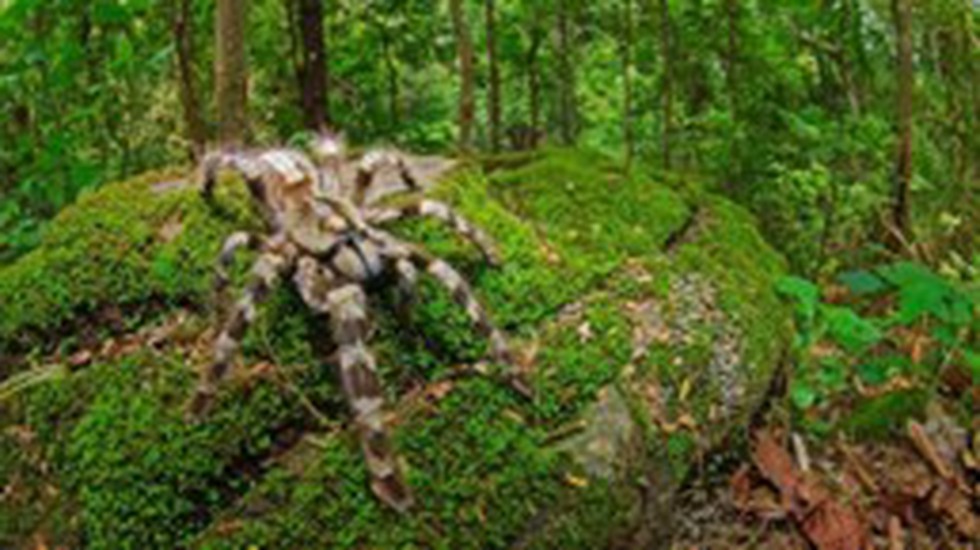
About Kanger Valley National Park:
- Location:
- It is located in Jagdalpur, in the Bastar district of Chhattisgarh state.
- It is located on the banks of the Kholaba River (tributary of the Godavari River).
- The National Park derives its name from the Kanger River, which flows in its length.
- It got the status of a national park in 1982.
- The entire Park constitutes the core area and there is no buffer zone.
- Topography: It is noted for its highly heterogeneous land formations, ranging from low, flat, and gentle areas to steep slopes, plateaus, valleys, and stream courses.
- It is home to three exceptional caves, famous for their amazing geological structures: Kutumbasar, Kailash, and Dandak-Stalagmites and Stalactites.
- National Park is known for the presence of underground limestone caves with dripstone and floston. The stalagmites and stalactite formations are still increasing.
- Tirathgarh Waterfall is located in the park.
- The Park also has a sizable tribal population.
- Flora: It is a typical mixed humid deciduous type of forest in which the Sal, Saugaun, teak, and bamboo trees are available in abundance.
- Fauna:
- Major wild animals include tigers, mouse deer, leopards, wildcat, sambar, chital, barking deer, langurs, jackals, rhesus macaque, flying squirrel, etc.
- The aerial fauna at the park consists of common hill myna, red jungle fowl, spotted owlet, racket-tailed drongos, parrots, etc.
8. What is a Lamprey Fish?
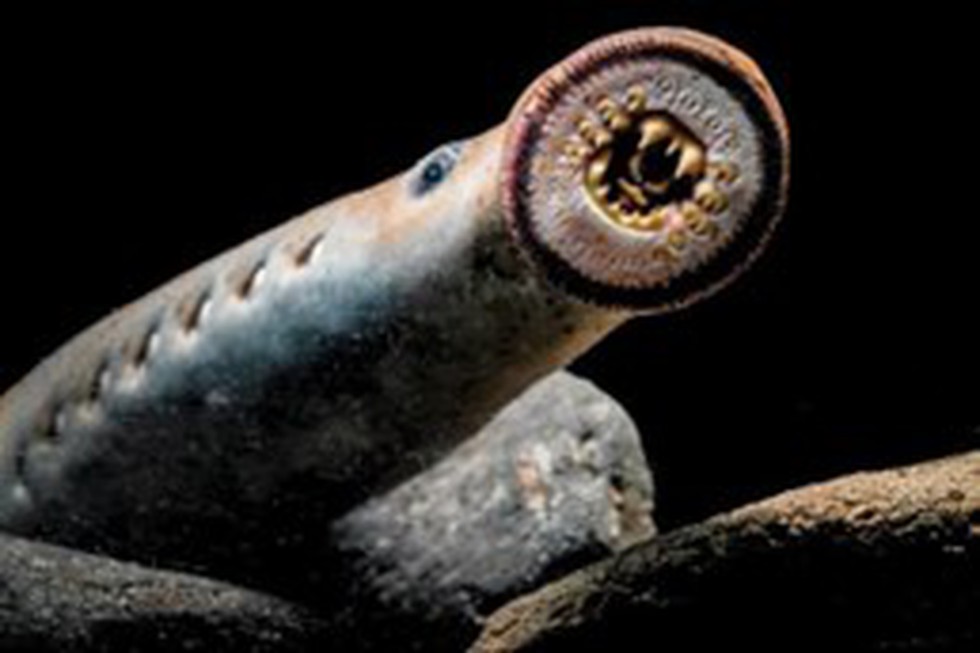
About Lamprey Fish:
- Lampreys are boneless, jawless fish with eel-like bodies that date back over 350 million years.
- They belong to a relic (primitive) group of jawless fish called Agnathans.
- They live in coastal and fresh waters and are found in temperate regions around the world, except Africa.
- Features:
- They range from about 15 to 100 centimetres (6 to 40 inches) long.
- Unlike "bony" fish like trout, cod, and herring, lampreys lack scales, fins, and gill covers.
- They breathe through a distinctive row of seven pairs of tiny gill openings located behind their mouths and eyes.
- Like sharks, their skeletons are made of cartilage.
- Lamprey’s jawless mouth is a circular, fleshy sucker filled with hundreds of small teeth and a rasping tongue.
- They are migratory fish, moving between fresh and saltwater to complete their lifecycle.
- They spend most of their lives at sea and only move into freshwater to spawn and for their juvenile life stage.
- They attach themselves to large animals like fish and whales using their sucker mouth. They feed as parasites, rasping into the host’s flesh with their sharp teeth and sucking out blood.
9. Key Facts about Aravalli Range
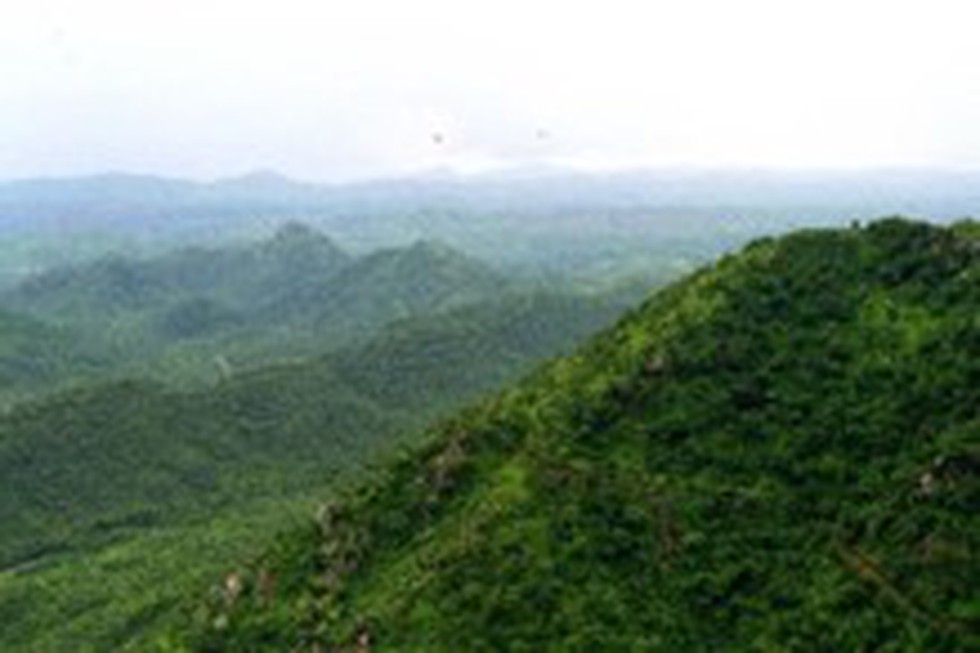
About Aravalli Range:
- It is a mountain range located in northwestern India.
- It is one of the oldest fold mountains in the world.
- It runs in a south-west direction, starting near Delhi, passing through southern Haryana and Rajasthan, and ending in Gujarat.
- The highest point of the Aravalli range is Guru Shikhar, which stands at an elevation of 5,650 feet on Mount Arbuda.
- It is 15 km from Mount Abu, which is a popular hill station in the Aravalli Range.
- Rivers: Three major rivers and their tributaries flow from the Aravalli, namely the Banas and Sahibi rivers, which are tributaries of the Yamuna, as well as the Luni River, which flows into the Rann of Kutch.
- The Aravalli acts as the edge which separates the Thar desert from the plains and plateaus of eastern Rajasthan.
- Formation:
- It is part of the Aravalli-Delhi orogenic belt, which is a large and complex geological structure formed due to the collision of tectonic plates during the Proterozoic era.
- It is part of the Indian Shield, that was formed from a series of cratonic collisions.
- In ancient times, Aravalli were extremely high, but since have worn down almost completely by millions of years of weathering.
- The range is rich in mineral resources like copper, zinc, lead, and marble.
- It is divided into two sections: the Sambhar-Sirohi ranges, taller and including Guru Shikhar; and the Sambhar-Khetri ranges, consisting of three ridges that are discontinuous.
- There are several national parks and wildlife sanctuaries that fall within the belt of Aravalli Hills. Sariska National Park, Kumbhalgarh Sanctuary, and Mount Abu Sanctuary are among them.
10. Pradhan Mantri Awas Yojana – Urban (PMAY-Urban) Scheme
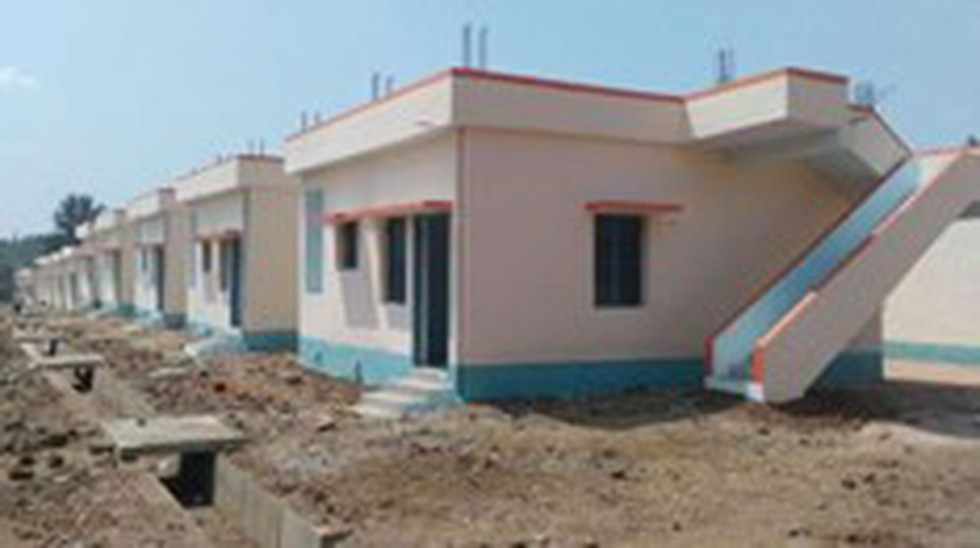
About Pradhan Mantri Awas Yojana – Urban (PMAY-U) Scheme:
- PMAY-U, being implemented since June 2015, is one of the major flagship programmes being implemented by the Government of India under the Ministry of Housing and Urban Affairs (MoHUA).
- Objective: To provide all weather pucca houses to all eligible beneficiaries in the urban areas of the country by the year 2022, through States/UTs/Central Nodal Agencies.
- The scheme covers the entire urban area of the country, i.e., all statutory towns as per Census 2011 and towns notified subsequently, including Notified Planning/ Development Areas.
- The scheme is being implemented through four verticals:
- Beneficiary Led Construction/ Enhancement (BLC)
- Affordable Housing in Partnership (AHP)
- In-situ Slum Redevelopment (ISSR)
- Credit Linked Subsidy Scheme (CLSS).
- In August 2022, the Union Cabinet approved the continuation of PMAY-U up to 31st December 2024, with all verticals except CLSS, for the completion of already sanctioned houses till 31st March 2022.
- Funding: The credit linked subsidy component will be implemented as a Central Sector Scheme while other three components will be implemented as Centrally Sponsored Scheme (CSS).
- All houses under PMAY-U have basic amenities like toilet, water supply, electricity, and kitchen.
- The Mission promotes women empowerment by providing ownership of houses in the name of female member or in joint name.
- Preference has also been given to differently abled persons, senior citizens, SCs, STs, OBCs, Minority, single women, transgender and other weaker & vulnerable sections of the society.


























































































































































.png)
.png)
.png)
.png)
.png)


.png)
.png)
.png)





.png)
.png)






.png)
.png)
.png)
.png)
.png)
.png)
.png)
.png)
.png)

.png)







.png)
.png)


.png)
.png)
.png)


.png)

.png)
.png)





.jpg)

.png)
.png)


.png)

.png)
.png)
.png)

.jpg)

.jpg)


.png)

.png)
.png)
.png)
.png)
.png)
.png)
.png)
.png)
.png)
.png)




.png)

.png)





.png)
.png)
.png)
.png)
.png)
.png)
.png)
.png)
.png)
.png)
.jpg)
.jpg)

.png)
.png)
.png)
.png)
.png)
.png)
.png)
.png)
.png)
.png)
.png)
.png)
.png)
.png)
.png)
.png)
.png)
.png)
.png)
.png)
.png)
.png)



.png)
.png)

.jpg)
.jpg)


.jpg)
.jpg)
.jpg)
.jpg)
.jpg)

.jpg)








.jpg)
.jpg)
.jpg)
.jpg)
.jpg)

















.jpg)
.jpg)







.jpg)


















.jpg)
.jpg)






























































































.jpg)
.jpg)


























.jpg)

.jpg)










.jpg)








.jpg)




.jpg)










.jpg)


















.jpg)












































.jpg)














.jpg)
.jpg)
.jpg)





.jpg)

.jpg)
.jpg)





































































.jpg)


































.jpg)
.jpg)
















































.jpg)












.jpg)


.jpg)




.jpg)
.jpg)
.jpg)

.jpg)
.jpg)
.jpg)
.jpg)

.jpg)
.jpg)
.jpg)

.jpg)
.jpg)
.jpg)
.jpg)
.jpg)
.jpg)
.jpg)
.jpg)

.jpg)


.jpg)
.jpg)
.jpg)
.jpg)
.jpg)
.jpg)
.jpg)
.jpg)
.jpg)
.jpg)











.jpg)
.jpg)





.jpg)
.jpg)
.jpg)
























.jpg)
























.jpg)









.jpg)
.jpg)







.jpg)
.jpg)









































.jpg)
.jpg)
.jpg)
.jpg)
.jpg)

.jpg)
.jpg)
.jpg)
.jpg)
.jpg)


.jpg)
.jpg)
.jpg)
.jpg)
.jpg)

.jpg)
.jpg)
.jpg)
.jpg)
.jpg)
.jpg)
.jpg)
.jpg)
.jpg)
.jpg)
.png)

.png)
.png)

.png)
.png)
.png)
.png)


.jpg)
.jpg)

.jpg)
.jpg)
.jpg)

.png)
.png)
.png)
.png)
.png)
.png)
.png)

.png)
.png)
.png)
.png)
.png)
.png)
.png)
.png)
.png)
.png)





































































-min.png)



.png)




.png)








































